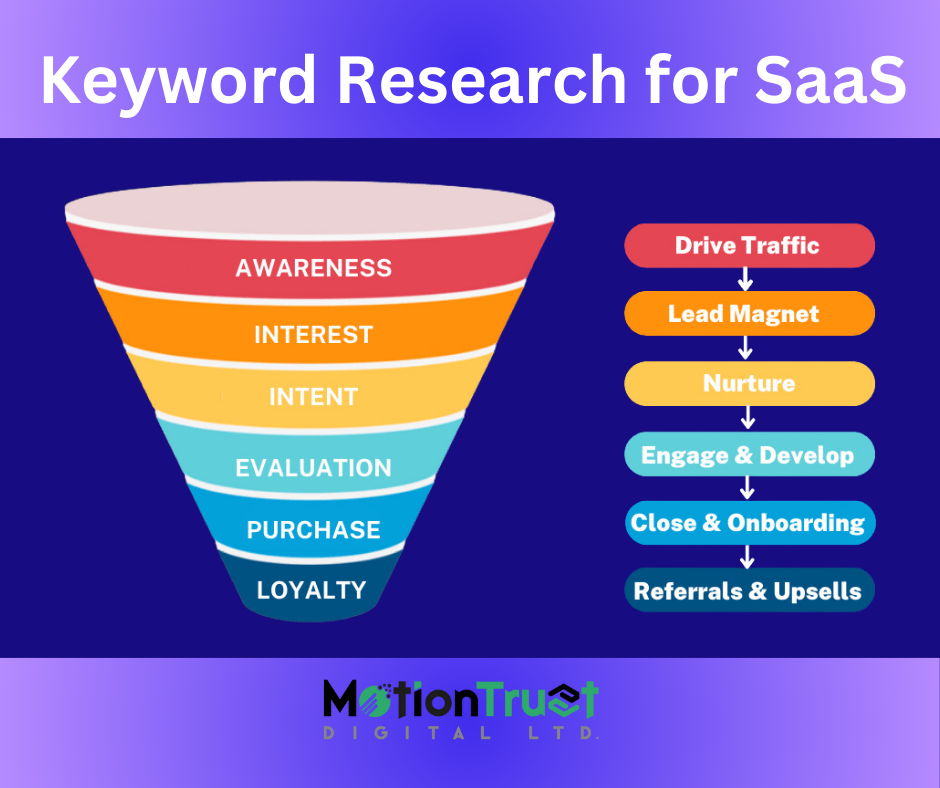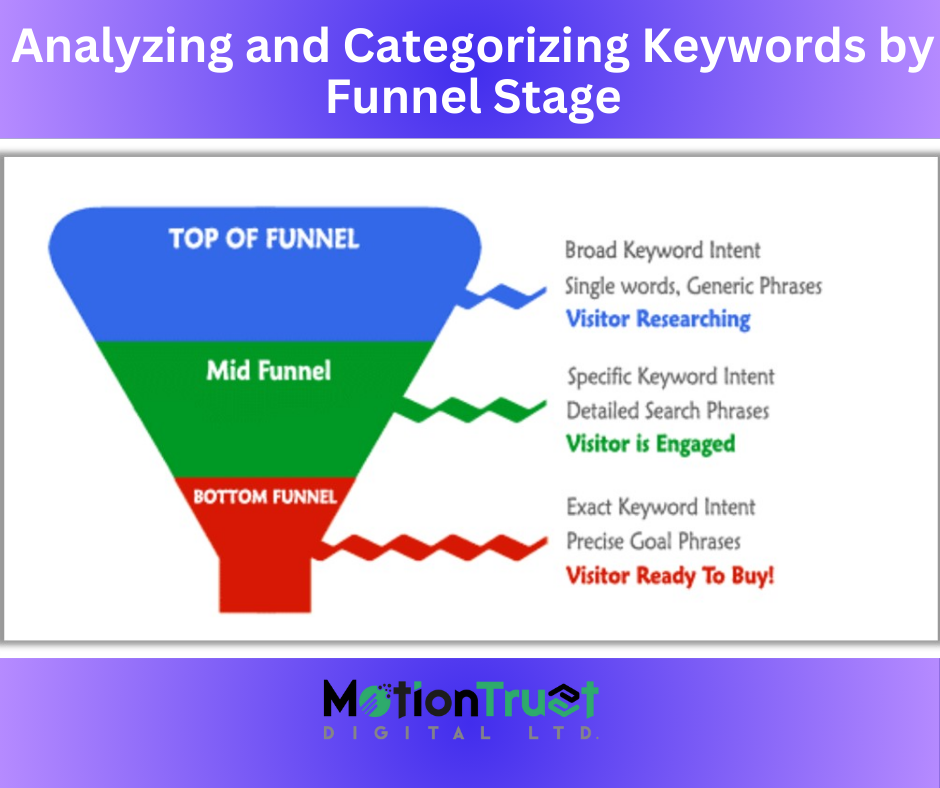
Making your sales funnel better is vital so as to achieve growth and increase the revenue. One of the most effective approaches to accomplishing this would be through strategic keyword research services. A firm grasp on these keywords and their use will lead you to high-quality traffic, well directed prospects in the marketing process, and in turn a greater number of conversions. The aim of this post is to look at how Keyword Research for SaaS can help you enhance your SaaS sales funnel and also explain why it’s an integral part of your overall marketing strategy.

Before diving into keyword research services, it’s essential to understand the SaaS sales funnel and how it operates. The typical sales funnel has four main stages:
The prospect’s particular needs and concerns must be addressed in each stage. For instance, during the Awareness Stage, your content should attempt to educate prospects about their issues and how your SaaS product could potentially address them. The content at first should be generic as it moves through the funnel indicating your unique proposition and eventually motivating them to take action.
Keyword research involves finding and analyzing search terms that people use when looking for information on the internet using search engines. For software as a service (SaaS) companies, knowing what potential clients are searching for is very important because you can then tailor your contents towards that end.
With SaaS keyword research, you will be able to get the pain points and needs of your target audience. As an example, if you discover many people searching for “project management software for small teams” it means there is a need for SaaS products that are customized specifically for small teams. This allows you to create content addressing this specific need, positioning your product as the right choice.
Mapping keywords to funnels stages is the next thing you should be doing after identifying relevant ones. It helps ensure that your content aligns with prospect’s intent at each stage of the funnel, making it easy for them to pass through smoothly.
By mapping keywords along the customer journey, it becomes possible to develop content that speaks directly to an audience at every point increasing conversion rate chances.
Following an extremely difficult and confusing language, this article aims to equip you with the knowledge you need to begin utilizing keyword research in your SaaS sales funnel optimization. These few guidelines will help you determine what really matters.
There are several tools available on the internet that can make keyword hunting easier for SEO analysts. One of them is Google Keyword Planner. Once opened, just type what you want to search for in order to get suggested keywords or ad group ideas. This is the best way to find out what people are actually searching about when it comes to your product or service.
Use SEMRush or Ahrefs as well as Google Keyword Planner to identify relevant keywords for your software business. Start by entering major words concerning your product and explore more about related key phrases, questions and long-tail versions.
To start off with you should ask yourself some questions; What are some topics which I can provide information on? In general terms, they could be topics such as: “How does it work?” “What are the benefits?” “Who uses this kind of product?”
For instance, if your SaaS product is a project management tool, you would begin with keywords like “project management software” and then find similar terms that include “task management tools,” “collaboration software” and “team productivity apps.”

Once you have created a large list of possibly useful keywords, organize them according to sales funnel stages. Here’s how:
By organizing keywords in this manner, content can be developed to walk prospects through each stage of the funnel meeting their needs precisely.
After you have mapped keywords to each stage of the funnel, the next step is to create content that incorporates those. Here are some hints for developing good content:
Your content will not only rank higher on search engine results but also strike a chord with your target audience at the various levels of the sales funnel.
Do not disregard optimizing your already existing content. By giving old blog posts, landing pages and product pages new keyword insights, they become more relevant and perform better. Here is how:
You need to regularly optimize your existing content so that it keeps driving traffic as well as conversions even when search trends change.
SaaS Company A, which is a project management software provider, used Saas keyword research agency to enhance its lead generation efforts significantly. Through the help of this, they came up with several articles and guides on their blog that are focused around high volume top of the funnel keywords like “how to manage a remote team”. These posts drew in a large audience that eventually trickled down the funnel and converted into paying customers. By producing wide-ranging educational content for a broad base of people at the Awareness stage, it was possible for them to attract more leads towards their funnel.
SaaS Company B dealing with CRM software decided to target some bottom-funnel keywords such as “CRM software pricing” and “buy CRM software” in order to drive conversions. Optimizing product pages using these words, including customer feedbacks plus making CTA simple constituted some of their approaches. They consequently witnessed tremendous improvement on conversion rates where more prospects were making purchase decisions right from their websites. This resulted from narrowing down on high intent keywords because thus making more leads convert into customers while at Decision stage.
For effective measurement of your keyword research services efforts, the need to lay the right analytics and tracking is vital. Google Analytics, HubSpot, and SEMrush can assist you in checking how your content works after being optimized by keywords. Some key metrics to consider are:
Through these measurements, one can be able to gauge how well their content performs and thus make decisions based on data.
An example of this is that if you see a particular keyword isn’t working as well as anticipated, change the content around it or look for another one. Therefore, it requires continuous optimization to make sure that a SaaS sales funnel adapts to changes in search trends while at the same time remaining effective.
This article will discuss how including keyword research agency into your software-as-a-service (SaaS) sales funnel can help attract the right kind of traffic, guide prospects through the funnel and increase conversions. By understanding what role keywords play at each stage of the funnel, you will be able to create targeted content that resonates with your audience and drives results.